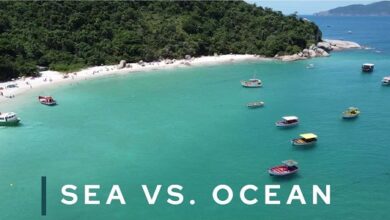What is the Green Climate Fund/creation/working/Examples/Current status
Concern for the environment is not something new, despite the speeches and attention generated having risen in tone in recent years, with the worsening of the climate crisis and its consequences. In this article we will provide you inforamtion about Green Climate Fund.
The truth is that climate change is a reality and is already affecting societies as a whole, with billions in economic implications for individuals, companies and nations.
It is also undeniable the importance of environmental preservation and the alarming signs that scientists and activists expose.
The weather extremes that occur today with more frequency and intensity are nothing new to climate scientists, who have been publicizing their studies for decades.
Gradually, with comings and goings, governments and multilateral institutions take measures to combat the problem.
It is in this context that the Green Climate Fund (GCF) is inserted.
Created in 2010, it is a climate finance mechanism , operating within the framework of the United Nations Framework Convention on Climate Change (UNFCCC).
In addition, it is the main mechanism to finance mitigation and adaptation actions and thus reduce the impact of climate change under the Paris Agreement .
What Is The Green Climate Fund: Creation
The Green Climate Fund (GCF) was created at the United Nations Climate Change Conference held in Cancun ( COP 16 ) in 2010.
Thus, it was established by 194 members of the United Nations Framework Convention on Climate Change (UNFCCC).
It currently has a 24-member board and is headquartered in Incheon, South Korea.
The objective of the Green Climate Fund is to finance projects that reduce the emission of greenhouse gases, helping the most vulnerable countries to adapt to the impacts of climate change .
The intention is to build climate resilience in developing countries.
As of March 12, 2020, 129 projects have been funded, with US$5.6 billion committed to the most diverse causes in Africa, Latin America and the Caribbean, Asia/Pacific and Eastern Europe.
Below, we will talk a little about the projects that are financed by the Green Climate Fund.
How Does The Green Climate Fund Work?
The principle of the fund is to finance climate change mitigation and adaptation projects, not create the projects on your own or think about their logistics.
GCF-accredited organizations submit their projects and enter a process of review and approval by the fund’s board.
To speed things up, the Green Climate Fund created the SAP (Simplified Approval Process) for projects up to 10 million dollars, offering consultancy to those who want to have the resources released.
Projects fall into three categories :
- Mitigation
- Adaptation
- cross.
Mitigation projects are activities that reduce greenhouse gas emissions.
For example, the use of cleaner technologies in companies or forest conservation projects.
They can fit into several areas, such as:
- Generation and access to energy
- Transport
- Forests and land use
- Buildings, cities, industries, facilities and equipment.
Projects in the Adaptation category are measures that reduce the vulnerability of populations and ecosystems .
For example, changing populations living in areas of constant flooding due to rising sea levels (islands that will disappear), or building containment barriers due to rising sea levels and storm surges.
The areas involved are:
- Water, food and health security
- Livelihood of people and communities
- Ecosystems and ecosystem services
- Infrastructure and built environment.
The category entitled Transversal approves projects that act both in mitigating and adapting to climate change.
Each country helps in directing funds and project preference through DNAs (National Designated Authorities) or Accredited Entities (EAs).
The DNA communicates to the GCF the country’s strategic priorities for climate finance, with a focus on promoting a change in the national development paradigm, developing a low-carbon and resilient economy.
In addition, the DNA is responsible for implementing the no-objection procedure in the country, through the technical analysis of program and project proposals to be financed by the GCF.
It is also among its attributions to indicate national entities for accreditation in the form of direct access to the fund.
Examples Of Supported Projects
Several projects in the so-called Global South have already received funding from the Green Climate Fund.
For example, in northern Colombia , the region known as La Mojana seeks to improve management and access to drinking water so that populations can survive both periods of intense rain and drought.
This is a project framed in adaptation.
Another interesting project is the solar energy plant in the Atacama Desert , ready to be deployed in Chile (in the Mitigation category).
Its completion will reduce the CO2 emission that occurs with the production of energy by fossil fuels.
Africa also has several projects being financed in specific areas.
For example, in Mali, access to electricity through solar panels will be given to communities that previously used diesel generators and kerosene lamps.
In Ethiopia, however, the problem of drought generated the need for a project to provide water and irrigation on a small scale.
The initiative has a cost of 50 million dollars and should benefit 330 thousand people directly and 990 thousand indirectly.
You can check out all the projects that the Green Climate Fund funds on the official GCF website .
Current Status Of The Green Climate Fund
The Green Climate Fund is fully operational.
The number of projects , money invested and people benefited grow every year.
You can follow the updated data on the Green Climate Fund website .
Below is a summary of information collected in March 2020 :
- Amount allocated to projects already approved by the GCF board: $5.6 billion
- Value of projects already under implementation: US$ 3.9 billion
- Amount already disbursed to implemented projects: US$ 948 million
- Number of projects: 129
- 6 billion tons of carbon equivalent have already been avoided
- 26% went to Adaptation projects, 39% Mitigation, and 35% Transversal
- 61% were projects financed in the public sector and 39% in the private sector
Also noteworthy is the Green Champions award , created by the fund in August 2019.
The initiative brings together several categories, such as Youth Champion for the Climate and Entrepreneur for the Climate .
Anyone who wants to follow the fund’s growth can do so on its official website.
Projects, data and approval processes are transparent.
Moment Of Doubts About Funding
Current discussions of the CGF revolve around funding.
The United States , still under the Barack Obama administration , invested 1 billion dollars and committed another 2 billion.
However, with the move to the Donald Trump administration , the rest of the investment did not happen.
The current American president directly criticized the Fund at the same time he withdrew the United States from the Paris Agreement.
At the same time, countries such as the United Kingdom, Germany and France have moved in the opposite direction and increased their investments in the fund, in some cases doubling their values .
There are several incentives for countries in the so-called Rich North to put money into the Green Climate Fund.
The first is to compensate for the fact that its energy generation is based on the burning of fossil fuels, as well as other actions that involve the emission of pollutants.
The second is to encourage developing countries not to increase their emission of pollutants, which would further complicate the already sensitive environmental situation.




